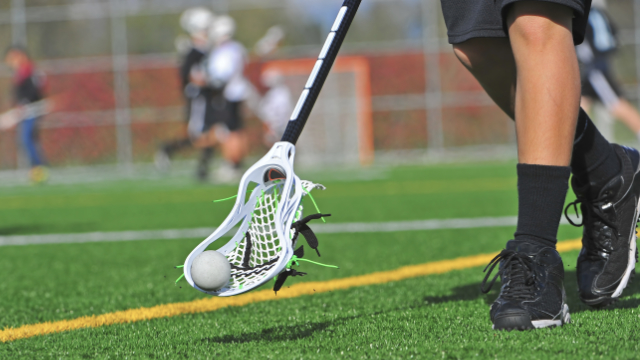News
Seeing A Physical Therapist Can Help Ensure A Safe Return To Sports

In the realm of sports–related injuries, the hamstring is one that most people are at least somewhat familiar with. This makes sense, as a pulled hamstring—or hamstring strain—is one of the more common injuries in sports. The pain and movement restrictions that result from this type of injury usually prevents an athlete from participating in their respective sport for some time, but following a course of physical therapy can lead to a fast recovery and safe return to sports for patients dealing with a hamstring strain.
Although it might be assumed to be a single muscle by some, the hamstring is a muscle group consisting of three separate muscles—the semitendinosus, semimembranosus, and biceps femoris—that run down the back of the thigh from the lower part of the pelvis to the back of the shinbone. These three muscles serve a crucial role, as they help the knee joint to bend (flex) and the hip joint to straighten (extend). The hamstring is balanced by the quadriceps muscles in the front of the thigh, which are responsible for the opposite function: extending the leg at the knee joint and flexing the thigh at the hip joint. Together, they control the power and stability of the knee joint and allow for running and other activities.
A hamstring strain can involve any of the three hamstring muscles, and the most common cause for an injury is overloading one or more of these muscles. This can occur when a muscle is stretched beyond its capacity or challenged with a sudden load, which is why hamstring strains are so common in sports, especially those that involve lots of sprinting or sudden changes in direction. Therefore, athletes who participate in basketball, football, tennis, soccer, and the sprinting events of track—as well as dancers and gymnasts—have the highest risk for sustaining a hamstring strain. Other risk factors include prior hamstring injury, muscle tightness, poor conditioning, and older age.
When a hamstring strain occurs, the most common symptom is a sharp pain in the back of the thigh that may be felt immediately. Patients may also feel a “popping” or tearing sensation in this region, which may be followed by tenderness or swelling that may develop within a few hours. Some patients may experience bruising or discoloration on the back of the thigh or persistent weakness in this area as well.
Physical therapists always ensure patients are ready to return to sports
A hamstring strain may sound like a daunting injury, but for most patients, conservative (non–surgical) treatment and some time away from sports is all that’s needed. Physical therapists are uniquely positioned to manage patients with hamstring strains and can help them recover quickly and safely through individualized and evidence–based treatment. A standard treatment program for a patient with a hamstring strain will consist of the following:
- Range of motion exercises: once initial pain and swelling have subsided, the patient will start with some gentle stretching exercises like a hamstring stretch to improve flexibility
- Strengthening exercises: includes various strengthening exercises to build back strength in any areas that are weak
- Manual therapy: involves the therapist applying hands–on techniques to the patient’s muscles and joints to alleviate pain and improve range of motion and strength
- Functional training: this type of training includes exercises that are specifically catered to the sport or activity that the patient is returning to
Another significant benefit of having physical therapy for a hamstring strain is that therapists always take every measure to ensure that athletes don’t return to sports until they have completed their rehabilitation and can do so with a minimal risk for injury. This is accomplished by structuring the timeline of programs based on the average time needed to recover from a hamstring strain, closely evaluating the athlete’s progress along the way, and then assessing the athlete when they are nearing a return to ensure they fulfill all appropriate criteria. Only then will the therapist provide the go–ahead that the athlete can safely return to his or her sport.
According to a proposed algorithm for hamstring strains, an athlete will be ready to return to their sport once they meet the following criteria:
- No tenderness when pressure is applied to the hamstring
- Adequate muscle strength based on strength testing
- No insecurity on the active hamstring test, which is done by performing a straight leg raise as fast as possible to the highest point without fear of injury
- Ability to complete 30 or more repetitions of the single leg bridge test
- No pain or hesitation with sport–specific movement testing (eg, accelerations, decelerations, rotations, sprinting, cutting, pivoting, jumping, or hopping)
So if you’ve recently injured yourself and your symptoms sound similar to a hamstring strain, we strongly recommend seeing a physical therapist to help you get started on your path to recovery.
Disclaimer:
The information in the articles, posts, and newsfeed is intended for informational and educational purposes only and in no way should be taken to be the provision or practice of physical therapy, medical, or professional healthcare advice or services. The information should not be considered complete or exhaustive and should not be used for diagnostic or treatment purposes without first consulting with your physical therapist, occupational therapist, physician or other healthcare provider. The owners of this website accept no responsibility for the misuse of information contained within this website.
